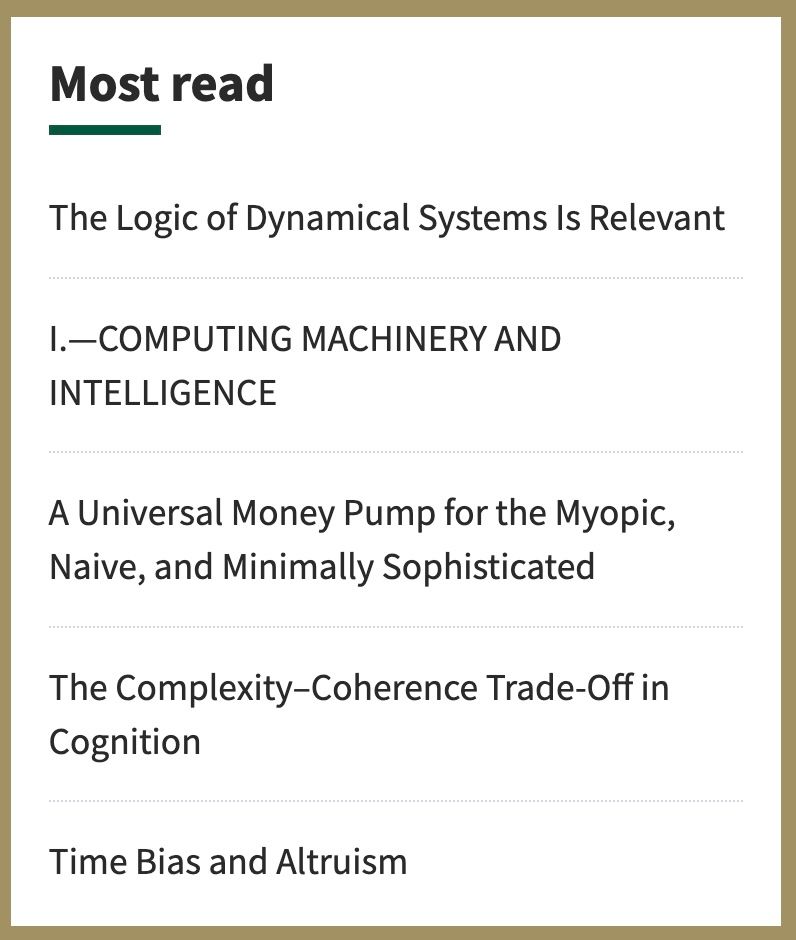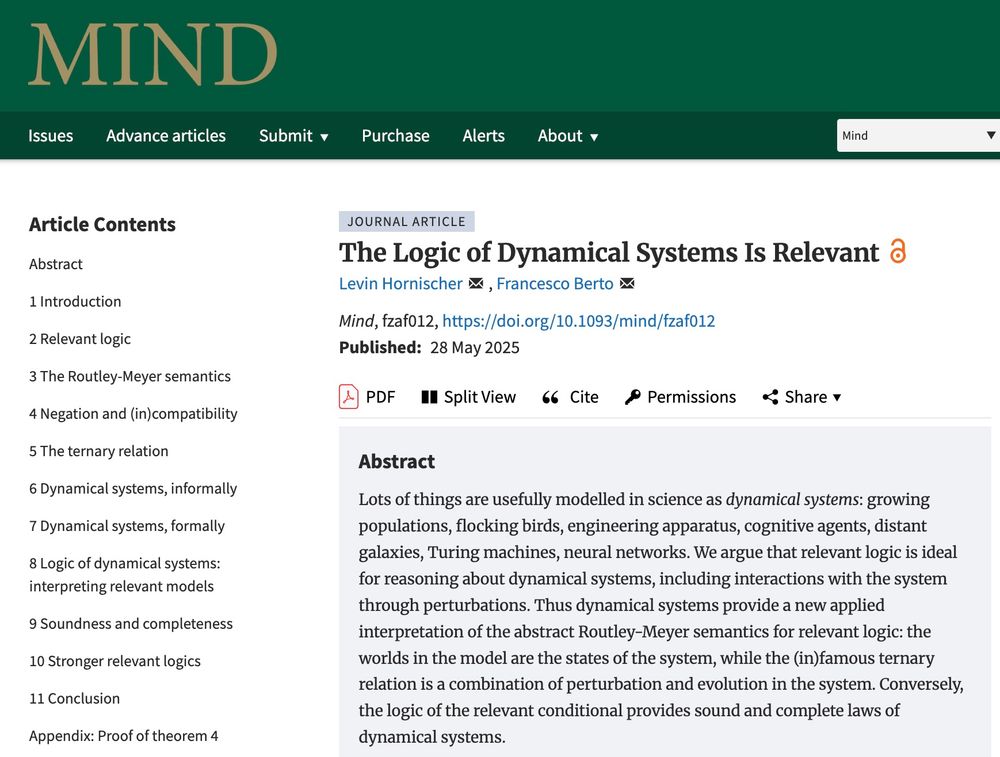Thank you so much, Shawn!
06.08.2025 19:23 — 👍 2 🔁 0 💬 0 📌 0

The preferences concerning three alternatives (apple, banana, cherries) of three stylized individuals are fed into a stylized neural network. The network outputs a ranking of the three alternatives as the aggregated preference of the group. It selects the top ranked alternative, in this case the apple. In the bottom right, there are two stylized scientists wondering if this network is 'anonymous', 'biased', and 'cycle-free' in its preference aggregation.
New paper in JAIR, with Zoi Terzopoulou: 'Learning How to Vote with Principles: Axiomatic Insights Into the Collective Decisions of Neural Networks'
❓Can neural nets find new voting rules to aggregate preferences?
💡Yes, by optimizing for axioms!
jair.org/index.php/ja...
philpapers.org/rec/HORLHT
06.08.2025 17:55 — 👍 4 🔁 1 💬 1 📌 0
Very happy to have co-organized our summer school with an amazing team 🥳 Thank you to the speakers and participants alike for making this such a nice event!
01.08.2025 21:58 — 👍 3 🔁 1 💬 0 📌 0

Take that, Alan!
21.07.2025 13:18 — 👍 4 🔁 1 💬 0 📌 0

So currently our paper is the 2nd most read in Mind. This'd be all good and well, if we hadn't been beaten by... Some bloke's 75 year old stuff. 😎
academic.oup.com/mind/advance...
@levinhornischer.bsky.social @standrewsphil.bsky.social @oupphilosophy.bsky.social
26.06.2025 10:19 — 👍 7 🔁 1 💬 2 📌 0

'The Logic of Dynamical Systems Is Relevant' is out!
(Or, How I Stopped Worrying and Learned to Love Relevant Logic Again.)
Download here, Open Access of course:
academic.oup.com/mind/advance...
@levinhornischer.bsky.social @standrewsphil.bsky.social
28.05.2025 09:02 — 👍 7 🔁 2 💬 2 📌 0

Thousands of small dots in 10 different colors on a white background. Dots with the same color form clusters.
A dot represents an input-label pair ('possible world'). Close-by dots are possible worlds that are similar according to the neural network's reasons structure ('internally similar'). The fact that they form monochromatic clusters means that internally similar worlds typically are also externally similar, i.e., have the same label. In this case, there are 10 labels represented by the 10 colors. So the neural network's reasons structure matches that of the world.
New preprint, with Hannes Leitgeb @lmu-mcmp.bsky.social: "Explaining Neural Networks with Reasons".
➡️We propose a new faithful and scalable interpretability method for neural networks.
💡Based on a novel mathematico-philosophical theory of reasons.
arxiv.org/abs/2505.14424
philpapers.org/rec/HORENN
21.05.2025 19:44 — 👍 4 🔁 2 💬 0 📌 0

The algebra of truth values obtained after iterating 'both' and 'neither' two times.
It consists of 16 truth values shown as black dots on a white background. Some are connected by solid lines, which indicates that, in the algebra, one is less-or-equal to the other.
There is a small text next to each node describing the truth-value. For example, the node closest to the bottom left corner says { {0,1}_n, {0} }_n. This is the following truth value: Neither 'neither true nor false' nor 'false'. The other nodes are variations thereof.
New paper in Notre Dame J. Formal Logic: 'Iterating Both and Neither: With Applications to the Paradoxes'
❓What if we keep on adding new truth-values 'neither a nor b' and 'both a and b'?
➡️Fun math and fresh ideas for paradoxes!
Paper: doi.org/10.1215/0029...
Preprint: philpapers.org/rec/HORIBA
03.03.2025 13:14 — 👍 3 🔁 0 💬 0 📌 0
It's been great fun working on this with @franzberto.bsky.social! Read on if you like dynamical systems and/or logic 🙂
❓What's the logic of perturbation conditionals:
➡️ If we perturb the system into a state where A, it will evolve into a state where B.
💡Surprisingly, it's relevant logic!
29.01.2025 15:08 — 👍 6 🔁 0 💬 0 📌 0
History and Philosophy of Science, Cognitive Science,Experimental Philosophy, distinguished Prof at Pitt, Director of the Center for Philosophy of Science
🎙️ Ping Pong Philosophy, the podcast with short serves and long ideas
https://pingpongphilosophy.carrd.co/
Hosted by @pablorivasrobledo.bsky.social
Edited by Agencia Arrebol
Offizieller Account der Universität München
Geschwister-Scholl-Platz 1, 80539 München
Impressum: www.lmu.de/de/footer/impressum/index.html
Datenschutz: www.lmu.de/de/die-lmu/struktur/zentrale-universitaetsverwaltung/kommunikation-und-presse/social-media/
PostDoc @ Uni Tübingen
explainable AI, causality
gunnarkoenig.com
Math Assoc. Prof. (On leave, Aix-Marseille, France)
Teaching Project (non-profit): https://highcolle.com/
Illuminating math and science. Supported by the Simons Foundation. 2022 Pulitzer Prize in Explanatory Reporting. www.quantamagazine.org
The Centre for Logic and Philosophy of Science (CLPS) at the Institute of Philosophy (@kuleuvenuniversity.bsky.social) focuses on #logic and #philsci, with a concentration on the philosophies of the special sciences • https://hiw.kuleuven.be/clps #philsky
Philosopher of Artificial Intelligence & Cognitive Science
https://raphaelmilliere.com/
CS prof at University of Waterloo and Research Scientist at Google DeepMind.
Ph.D. Candidate at Mila and the University of Montreal, interested in AI/ML connections with economics, game theory, and social choice theory.
https://manfreddiaz.github.io
kathleen kath-mean kath-fighting machine | philosophy PhD candidate | she/her/hers
Postdoctoral Researcher at the Munich Center for Mathematical Philosophy (MCMP) - LMU Munich (https://shorturl.at/4XROY)
Mathematician, writer, Cornell professor. All cards on the table, face up, all the time. www.stevenstrogatz.com
Istanbul University | Philosophy and History
— A big smile to the established thoughts of the normative.
Wahlerdling, Postdoc, Artificial Intelligence, Epistemology, Philosophy of Mind, Neuromorphic Hardware, ANNs, Ethics, Heidelberg University
https://antonio.bikic.io
M.A Philosophy at Queen’s University Belfast.
Phenomenology - Social Epistemology - Philosophy of Mind - Philosophy of Pornography
Events Coordinator for British Postgraduate Philosophy Association
My Links:
https://linktr.ee/amcdermottphilosophy
PhD Candidate at the Munich Center for Mathematical Philosophy | I do research in Logic and Phil of Math | Here to connect and keep updated (he/his)✌️
Philosophy editors at academic publisher @degruyterbrill.bsky.social.
Connect with us here for information on our latest scholarly publications, news and developments in the field. #philsky
Nice new books -> http://tiny.cc/ldm4001
Philosopher of science working on concepts, experiments, multiscale modeling and societal issues in neuroscience and climate research.
Currently assistant prof @ Bielefeld University, Germany
website: philipp-haueis.de







